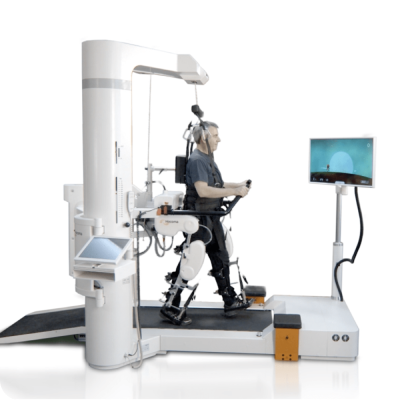Lokomat (Yürüme Robotu)

Rehabilitation Support Robot
Lokomat is a robotic rehabilitation system developed to help individuals who have lost or impaired walking ability regain mobility. It is effectively used in patients who have lost gait function due to stroke, spinal cord injury, neurological disorders, or orthopedic problems. This technology mimics the patient’s natural walking pattern, enabling faster and more efficient results during rehabilitation.
Technological Infrastructure and Application
Lokomat consists of a robotic exoskeleton integrated with a treadmill system. The robotic legs are attached to the patient’s lower limbs and controlled by specialized computer software to simulate natural walking movements. Sensors continuously monitor the patient’s performance, automatically adjusting resistance and support levels as needed.
Additionally, Lokomat integrates with virtual reality (VR) applications to provide motivating visual feedback to patients. This approach enhances both physical and psychological engagement, encouraging active participation in the rehabilitation process.
Advantages
- Restores natural gait patterns and supports motor learning.
- Enables intensive and repetitive exercise to strengthen muscle memory.
- Provides personalized rehabilitation through real-time sensor monitoring and automatic adjustments.
- Improves patient compliance through motivational visual feedback.
- Promotes early mobilization, reducing complications and accelerating recovery.
Clinical Applications
Lokomat (Gait Training Robot) is widely used in the rehabilitation of various neurological and orthopedic conditions:
- Post-Stroke Rehabilitation: Restoring gait function.
- Spinal Cord Injuries: Supporting motor functions.
- Multiple Sclerosis (MS) and Parkinson’s Disease: Improving gait disorders.
- Cerebral Palsy in Children: Enhancing motor skills at an early stage.
- Orthopedic Rehabilitation: Gait training after surgery or trauma.



